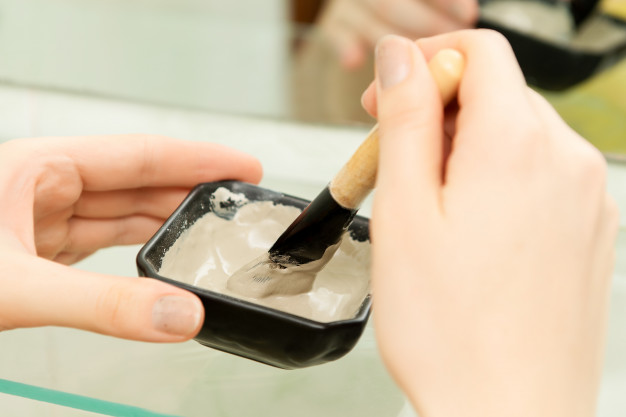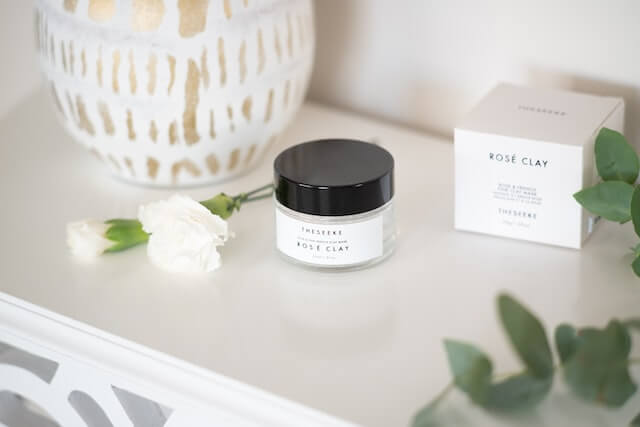Clay is as close to nature as you can get when it comes to skincare. Clay is a fantastic product for skin care since it has nutrients to nourish the skin and a little gritty texture for exfoliating. Due to the natural antibacterial qualities of clay, clay masks are a fantastic way to detox both your skin and your hair. How to use a clay mask? Try a basic clay mask to put on your face, or create a variant based on your skin type and preferences. You can make one yourself to use on your hair if you want to. There is no need for pricey spa treatments!
Amazing skin purifying and detoxifying effects may be found in clay. The advantages of clay in assisting in eliminating blemishes, removing impurities, and leaving you with glowing skin are unparalleled because of its mineral content. This is probably the reason why individuals all around the world use clay masks in an effort to get younger-looking skin. Knowing how to use a clay mask effectively and the best method and equipment to produce one will ensure that you get the most benefits from it. Some people believe that their skin will improve the longer a clay mask is left on, however, this is untrue.
Table of Contents
Types of clay mask
Kaolin Clay
How to use a clay mask or kaolin clay? For this one, you’re not a novice! Some of the most popular clays for face masks are those made of kaolin. Kaolin clay comes in different colors, including red, pink, brown, and yellow, but its most basic form is dazzling white. The mineral content and geographic origin of the substance are to blame for the color change. Iron oxide is present in greater concentrations in red kaolin clay, for instance.

Australian Pink Clay
Australian pink clay is a variety of pink clay that naturally occurs in Australia, as its name suggests. (And yes, Australian pink clay technically belongs in the kaolin clay type mentioned above, but because it is so distinctive, we decided it warranted its own section.) The adaptability, tenderness, and minerals of this particular clay, particularly those found in Australia, set it apart from other pink or kaolin clays.
Bentonite Clay
Old volcanic ash is used to make bentonite clay. Another popular item in the skincare line for your face and other body parts, this one. When used as a mask to remove dirt and oils like sebum, bentonite feels cold and silky (that waxy substance that creates a smooth layer on top of your skin). It serves a variety of purposes outside of skin care due to its natural qualities. One of the chemicals employed by the Egyptians to preserve their mummies, for instance, was bentonite.
French Green Clay
How to use a clay mask or french green clay? French green clay, sometimes referred to as illite clay or sea clay, is great for absorbing oils from your skin and is mostly sourced from France (huge surprise!). Deposits of rotting plant waste and iron oxide give it its vivid green color.
Rhassoul Clay
Rhassoul clay, a reddish-brown clay that may be found in the Atlas Mountains of Morocco, is a miracle worker for delicate and aging skin. It applies smoothly and has a light granular texture that aids in exfoliation (similar to French green clay). To refresh hair and skin, just so you know, humans have been using rhassoul clay for ages!
How to use a clay mask on your face?

- How to use a clay mask? As a general guideline, before to using the face mask, be sure to thoroughly cleanse your skin with a mild cleanser. Otherwise, you can be putting a face mask on top of a coating of oil, dirt, or other impurities.
- How to use a clay mask? Use a fresh facial brush to apply the clay mask on your face and neck evenly next. However, keep in mind that the skin surrounding your eyes, as well as the skin on your lips and brows, is quite fragile, so you might want to avoid these regions entirely.
- Once the mask is properly applied, leave it on your skin to dry for at least 10 to 15 minutes. Keep in mind that leaving the mask on until it is completely dry may cause more harm than good. How to use a clay mask? It is true that a mask can draw out more impurities when it is being taken off the longer it is allowed to dry. But for other skin types, over-drying can impair the quality of the natural skin, leading to skin dryness or inflammation.
- It’s also simple to remove the mask; all you need to do is cover your face with a warm, damp cloth to soften the clay, rinse it off in a circular motion, and pat it dry with a face towel.
- How to use a clay mask? The last step is to lightly blot and sweep your face with a cotton pad and a toner that doesn’t contain alcohol. It will get rid of any leftover mask material and seal pores to stop dirt and other impurities from penetrating your skin.
When should you use a clay mask?

- If you have dry skin, we advise using a clay mask about once a week at most. Afterward, be sure to moisturise your skin!
- Using your clay face mask three times a week is OK if you have oily skin.
- A clay face mask should only be applied twice a week, at most, for mature skin.
- How to use a clay mask? Clay masks may seem counterintuitive to those with sensitive skin, but don’t worry! In addition to being efficient, clay masks are kind to the skin. Being cautious is crucial in this situation. To see major improvements, use your clay mask once a week.
Why do I get pimples after using a clay mask?
How to use a clay mask? Use a face mask with clay or charcoal in it because those substances are known for their detoxifying effects. As a result of working deeply within the skin, they may cause blemishes to emerge as they draw out the toxins and bacteria from your skin.
5 Natural Face Mask Used Since Ages for Healthy Skin
Easy Morning Skincare Routine for Busy Days
6 Best Ways to Remove Blackheads from the Nose
